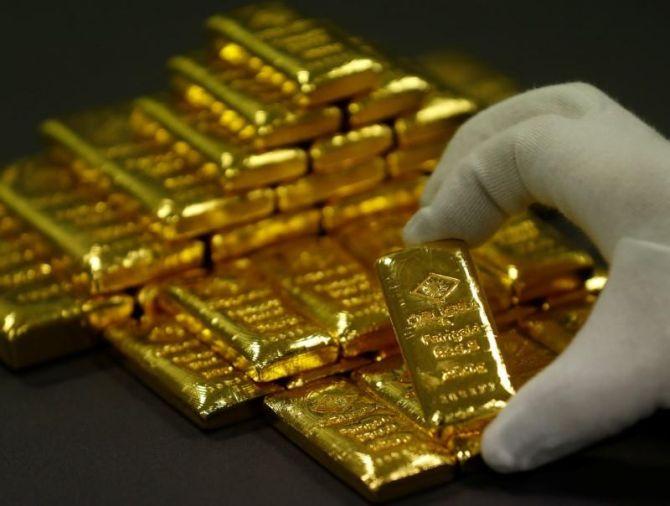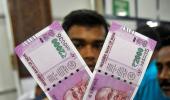Gold prices hit record high in the third week of March as fears of bank collapses and high inflation led investors to the traditional safe haven.

Gold prices are often inversely correlated to dollar strength because the international price is dollar-denominated.
The Federal Reserve’s (Fed’s) stance indicates that the dollar may appreciate further since it is prepared to keep pushing up policy rates.
But demand for gold is also up – the World Gold Council claims central banks are buying in addition to private demand.
The macro-situation plus the price trends could have interesting effects on gold-loan non banking finance companies (NBFCs).
When there’s economic stress, their business volume increases.
But they also face more defaults, which means more auctions, with higher credit costs and therefore, lower spreads and margins.
There is also increasing competition in this segment with many banks, especially fintechs, prepared to offer gold loans at lower rates.
Analysts expect the trend of loan growth at lower margins, which has been the case in the last five quarters, to continue.
Competition will force gold loan NBFCs to live with lower spreads and net interest margin (NIM).
Gold major, Muthoot Finance’s results for the third quarter of the 2022-23 financial year (Q3FY23) indicate low volume growth, with gold loan assets under management (AUM) up 5 per cent year-on-year (YoY) to Rs 56,800 crore, coupled with improved quarter-on-quarter (QoQ) yield of around 85 basis points (bps) which led to around one per cent QoQ expansion in NIM.
There was a marginal increase in cost of finance of about 20 bps, which led to overall lower expenses.
Non-gold segments and subsidiaries contributed 12 per cent to AUM, up 10 per cent YoY versus the previous quarter.
The standalone profit after tax (PAT) declined 12 per cent YoY but grew 8 per cent QoQ to Rs 900 crore, due to 10 per cent QoQ growth in NII (net interest income).
But asset quality declined with Gross Stage 3/Gross Stage 2 increasing by 90 bps and 80 bps QoQ to around 2.6 per cent and 2.3 per cent, respectively.
The 30+ Days Past Due (DPD) defaults and 90+ DPD rose by Rs 990 crore and Rs 530 crore, respectively.
Muthoot is focused on growing its non-gold AUM to 15 per cent as soon as possible.
The Manappuram Finance management also says it is targeting non-gold business, and guided for 20 per cent CAGR in AUM in the medium-term, while targeting 20 per cent Return on Equity.
It sees gold loan growth at around 3 per cent in Q4, driven by small ticket volume but it expects improvement to gold loan growth of 6-8 per cent in FY24 and 10-12 per cent in FY25.
The blended gold loan yields stood at 21 per cent while incremental borrowing cost was between 8.5-8.75 per cent.
Mannapuram’s microfinance subsidiary, Asirvad MicroFinance, may see beneficial effects from regulatory changes such as spread deregulation allowing for risk-based pricing, and a recent Supreme Court order quashing the jurisdiction of state governments to govern the Reserve Bank of India-regulated MFIs (micro finance institutions).
Mannapuram’s non-gold segments, such as micro, small and medium enterprises or personal loans, commercial vehicles loans and housing finance have seen strong growth on low bases.
Non-gold should contribute 45 per cent to the AUM by end of March 2023 and 50 per cent by end of FY24.
The company is looking for a strategic equity investor in its micro-finance arm.
Balancing off the factors, there’s moderate growth, margin pressures, and little pricing power due to competition.
But the risks appear to be controlled. Target prices for Muthoot stock are in the Rs 1,100 -1,140 range (current market price or CMP is Rs 974.35), while for that of Mannapuram stock are around Rs 150 (CMP Rs 121.90).












 © 2025
© 2025